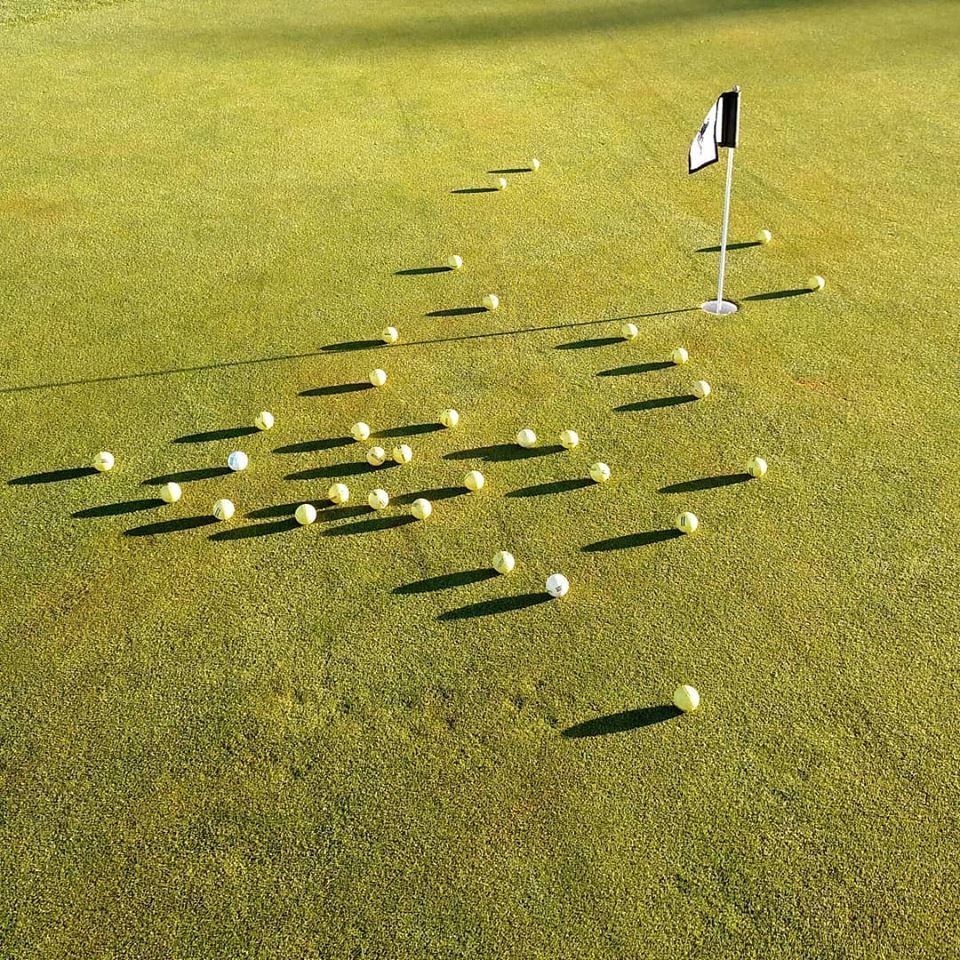How I (affordably) shaved ~18 strokes off my average score in 18 months (part 1)
Full Disclosure: I am not a PGA pro, in fact I’m not a certified golf instructor of any kind. If you can get past those things and are curious about a few of the key tenets of my successful 18 month journey; saving about a stroke a hole, without breaking the bank, please read on. Note: these tips are intended for people who are actively trying to improve their game and have some time to dedicate to this; moreso than someone just playing for fun… this can be a bit of a grind.
Buy a small bucket, rather than a large one at the range. This first step may seem a little counter productive for a person wanting to improve their game. However, there are only so many hours in the day and if the idea is to get bigger bang for our buck, most of us cannot afford the extra time this practice regimen requires if using twice as many balls. Plus, small buckets are cheaper than large ones!
My practice routine does not begin or end on the range. For me there are three important parts to every practice session (and – bonus – only one of them costs money); chipping, range work, and putting (that is the order I prefer to do them in, your mileage may vary).
After purchasing my small bucket, I make my way to the chipping green. There, I chip/pitch a variety of shots, starting close to the putting surface with a good deal of green to work with and then moving around to practice being short sided and having longer carries to get onto the surface. After I go through my entire small bucket at least twice on the practice green; I’ve taken (based on a small bucket of about 35 balls) at least 70 strokes, and still have my entire bucket of balls (ps, whether you are going to reuse the balls at the range or not, please pick up your balls on the chipping green… the next person – who doesn’t have to work around your balls or clean up after you – will appreciate it).

At this point I head over to the range. I always start with a wedge (GW one day PW the next), and hit about 5 full swings with it. After that I move through my bag skipping a club each time (e.g. if I start with the GW, I then hit my 9 followed by my 7 and then my 5) and taking roughly 10 swings with each.
This is the drill, however that is not the most important part. Before each shot I do my full pre-shot routine (as I would on the course), including at least one full practice swing an the selection of a target. In this way I am simulating what I would be doing on the course, avoiding bad “rushing” habits that are easy to develop on the range, and getting two or three quality swings in per ball. This brings me up to over 100 balls hit and 130-160 quality swings taken in my practice session.
Now it’s time to take my “talents” (or lack thereof) to the putting green. I start every putting session with the same three ball drill. I place all three balls in a line, the first ball about 3 feet from the cup, the second about 6 feet and the last one around 8 feet out. This drill used to be 1 foot, 3 feet and five; the middle ball should be right about at the point where I feel I can make half the putts. My current goal is to get that middle ball out to 8-10 feet. I move around the hole, placing the balls at 1 o’clock, then 3, 5, 7, 9, and 11. After two rotations I do another putting drill – the second drill changes daily – to wrap up my practice session.
At this point I’ve hit over 100 balls (and taken 130-160 quality swings), putted 50-70 strokes at various distances (focusing primarily on the “scoring zone”) and spent around 60 minutes practicing… at all a cost of around $3-5 depending on the price of range tokens at your course.
You can do this routine a lot of times for the cost of a single round of golf; you can do it every day of the week for less than most rounds cost. Moreover, you can do two thirds of this routine for free as often as you like. I do this routine daily on the way to work in the summer (and late spring/early fall) so it doesn’t even adversely effect the rest of my day or family life; I simply get up an hour earlier to start my day. It costs me (at most) $15 a week and the regular practicing (with a purpose) has dramatically reduced my scores while leaving my bank account relatively unharmed.
